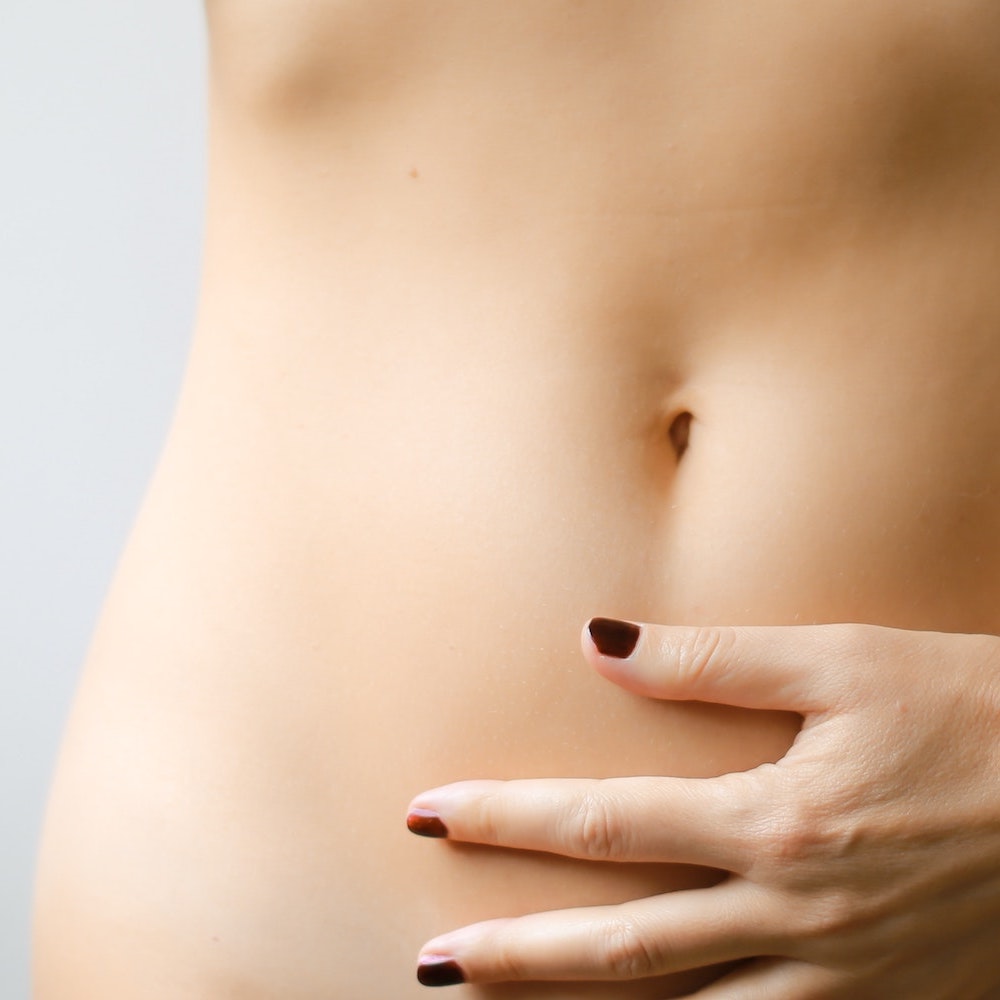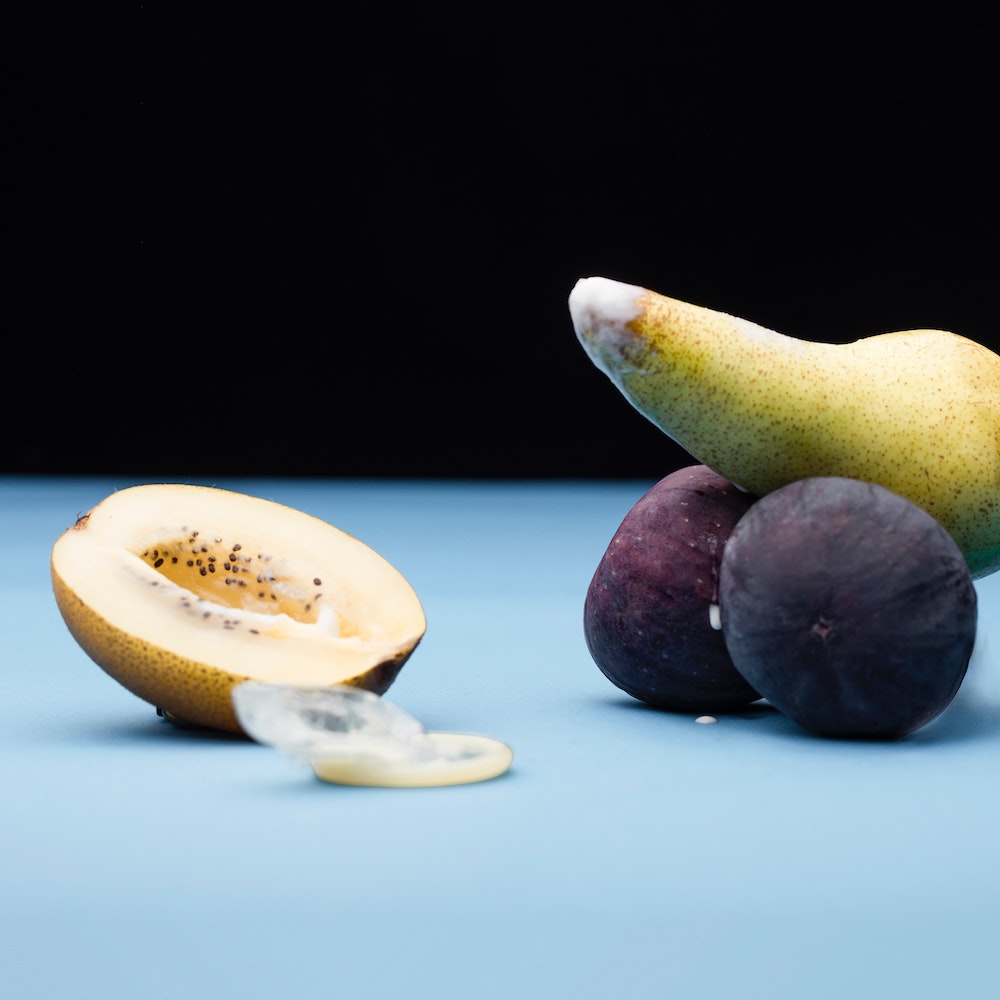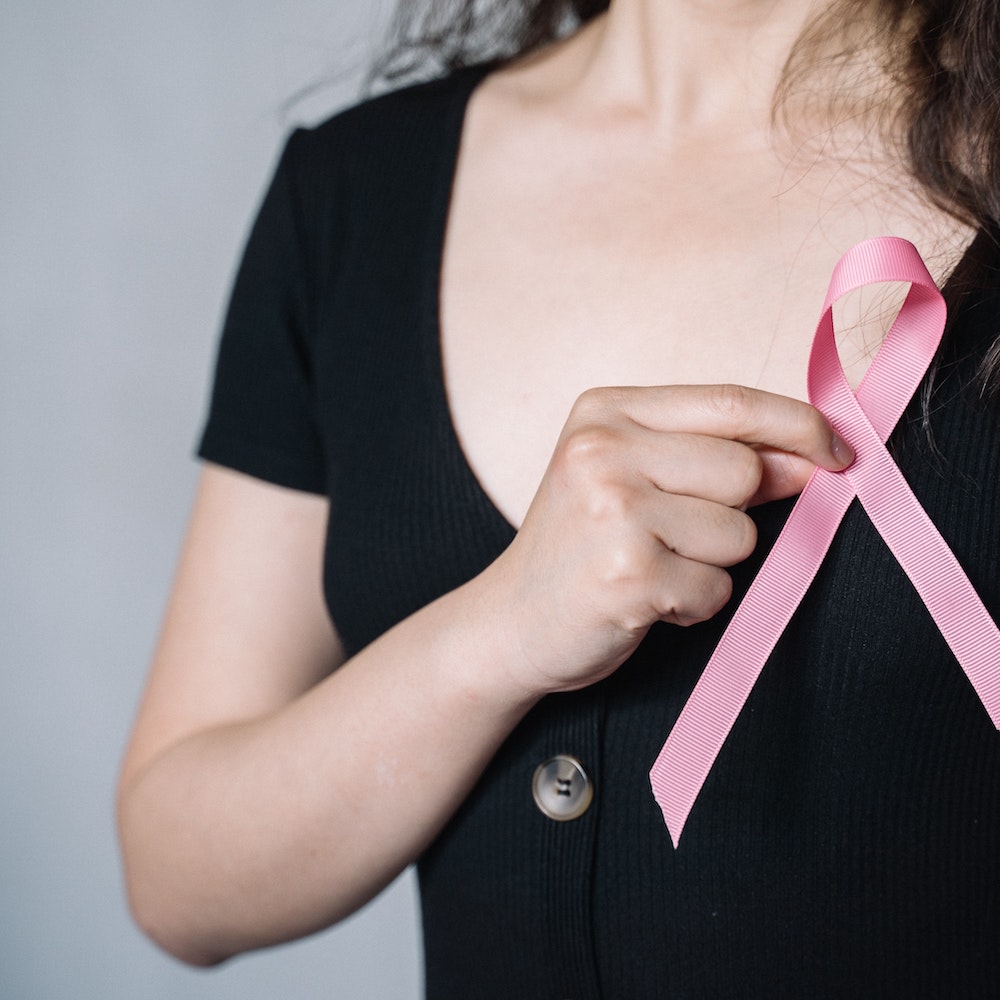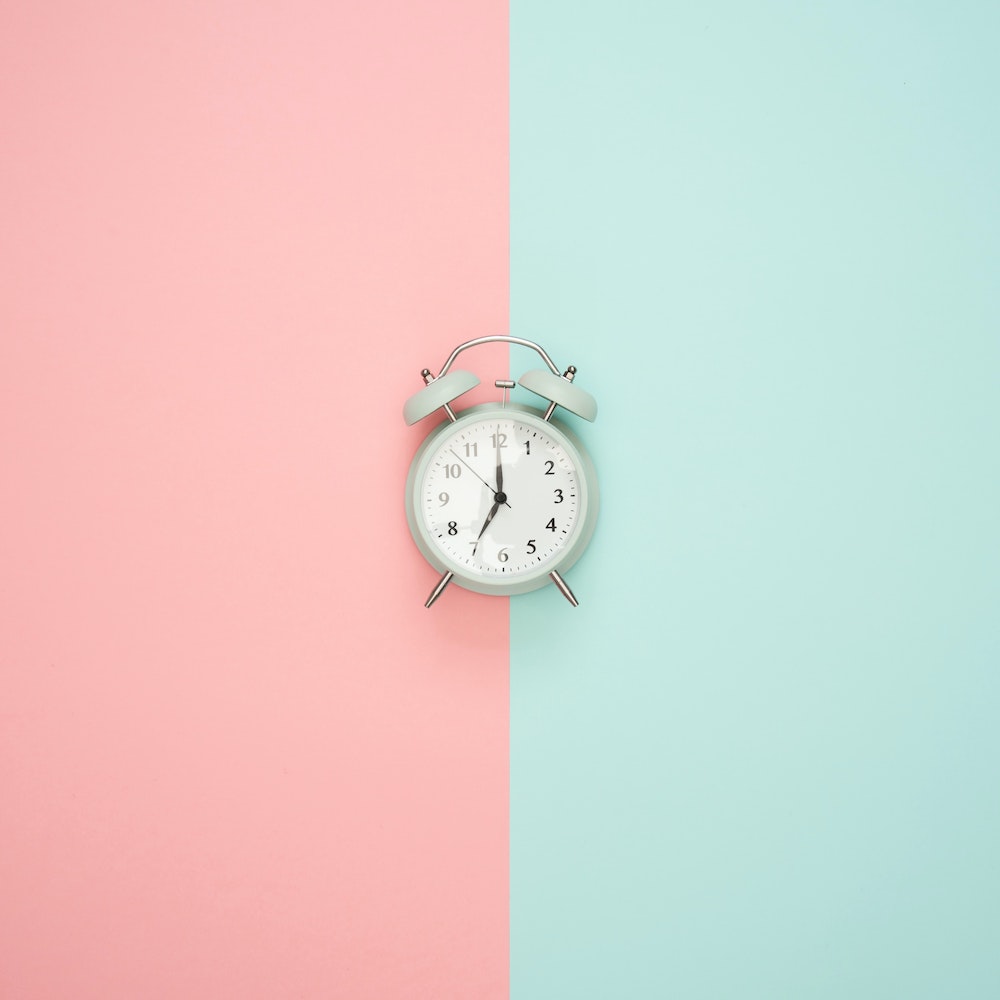EVERYTHING ABOUT
vaginal health
Every week I am posting about everything you need to know about hormones. This weeks topic is about vaginal health.
Did you know …
- Your vagina is a very sensitive, intimate part of your body’s anatomy but it’s also one of the most mysterious body parts.
- The vagina is a muscular tube, connecting the uterus with the vulva
- Half the population has a vagina, but most people don’t know the vulva from vagina not even women
- You can’t see your vagina without a mirror and even then it’s not easy, but you can see your vulva
- The Vulva is the female genitals on the outside
- The Vagina is the female genitals on the inside
- The average adult vagina is slightly curved, and can range between 7 to 12 cm in length
- Every body is different, and there’s no such thing as a too small or too large vagina.
- People often use the term vagina to refer to the entire female genital region between the legs, but this is incorrect
- The vagina is what babies exit through during birth, and what menstrual blood exits through during your period.
- The vagina is also used for insertion, such as with a penis, fingers, female condoms, sex toys, tampons, or menstrual cups.
- As you age, your vagina ages too!
- When you’re aroused, blood flows to the vagina to make it bigger, and more arousal fluid is produced
- The walls of the vagina can also be used as an administrative route for medications and contraceptives
- The vagina is an incredible organ which changes in response to hormones, life stages, and physical responses.
- Show your vagina some love
- Feel free to tell anyone you want just how amazing your vagina really is.
Meet Sally and get to know all about vaginal health
Intro vaginal health
Vagina 101
Vaginal odours
Vulva 101
Signs and Symptoms of an Aging Vagina
The importance of Vaginal pH
Vagina 101
- The vagina is the internal female genitalia that connects the vulva to the cervix
- The average adult vagina is slightly curved, and can range between 7 to 12 cm in length
- In a relaxed state (not aroused), the walls of the vagina are collapsed against each other
- Flattened by the pressure of the surrounding organs and tissues within the pelvis.
- The walls of the vagina are covered by many small folds which amongst other things allow the vagina to be stretched and expand when pressure is applied to the sides – like when a baby’s head is passing through.
- The walls of the vagina are composed of different layers of tissue
– The inner endothelial, mucosal tissue, similar to the tissue that lines your mouth, nose, blood vessels and digestive tract.
– Underneath the mucosal tissue are layers of smooth muscle tissue, collagen, and elastin fibres, which give the vagina strength and flexibility
- The G spot is located in the anterior wall, approx. 1/3 – 1/2 way up towards the cervix
- Stimulation of the G spot can cause exceptional pleasure – read more about the G spot in the article in this blog
- Fluids are released through the walls of the vagina to keep the area moist, and during times of sexual arousal, to increase lubrication.
The G spot 101
- Known as the Gräfenberg spot
- Isn’t actually a distinct part of the female anatomy.
- In a 2017 study, researchers attempted to find the G spot only to come up empty-handed.
- Is part of the clitoral network not its own separate spot in the vagina
- So when stimulating the G spot, you’re actually stimulating part of the clitoris
- The pea-sized nub where the inner labia meet is actually only the tip of the clitoris and divides into 2 “roots” that can be about 4 inches long.
- Once stimulated, the G spot can cause female ejaculation and vaginal orgasm.
Finding it
- Can be difficult, especially as there isn’t a map.
- Try through self-exploration.
- Insert your finger or a sex toy in your vagina
- Lift upward toward your belly button in a “come hither” motion instead of an in-and-out movement
- Keep focusing your attention on this area repeating the ‘come hither’ movement
- Not all women will find satisfaction through G spot stimulation
Sex positions to stimulate the G spot:
Cowgirl
- Your partner lay on their back or sits in the middle of the sofa
- You climb on top and straddle them
- You now have complete control over the rhythm, depth, and angle of penetration
- Instead of bobbing up and down, try moving back and forth to stimulate the G spot region against your inner vaginal wall.
Doggy style
- Start on your hands and knees with your partner behind you.
- During penetration, try leaning down on your forearms or pushing your hips backward to change the angle until you find the position that works best for you.
- Or lay flat on your stomach with your legs hanging off the edge of the bed, allowing your partner to stand behind you and penetrate from there.
- Your partner can also simultaneously stimulate your clitoris from the outside
Vulva 101
- Is comprised of the outer parts of a woman’s genital organs
- Analogous to the lips of the face
- While the vagina might be compared to the space inside the mouth.
- One of the most common misconceptions is that the vulva is the vagina
- The vulva includes
– the inner and outer labia (lips),
– the vaginal opening,
– the clitoral glans and hood
– the urethral meatus (pee hole)
- While the vagina is often referred to as the central feature of female sexuality and pleasure, it is the vulva that actually produces the most intense feelings of pleasure (and orgasm) for most women.
- This is because of the clitoris a small pea-sized bump rich in nerve endings, acts as a large, complex network of fun, pleasure-inducing that interconnects with the rest of the vulva.
- Compared to the penis the clitoris is actually richer in nerve endings and unlike the penis, serves the sole function of providing pleasure.
- Most women achieve the greatest pleasure and orgasm through the stimulation of their vulvas as opposed to penetration of the vagina.
- They Come In All Shapes And Sizes
- No two Vulvas are the same size, shape or colour
- The vulva can differ significantly from one woman to another.
- Cosmetic surgery of the vulva has increased in demand recently, with some women opting to reduce the size of their labia and or their colour
- Let me reiterate that there is no ‘normal’ standard of how a vulva should look like.
- Pregnancy changes your vulva as the level of hormones can alter the size, shape and colour of the labia, which generally resolve post childbirth, but at times minor changes might persist which is normal.
- Your vulva may not like thongs, which may create rashes or irritation and should be completely avoided, making a comfy pair of panties your best friend
- Your vulva can tell you about your health, as STI’s – sexually transmitted infections can lead to sores on vulvar tissue, such as genital herpes and human papillomavirus (HPV). Symptoms of vulva cancer include lumps and itching in the vulva, and changes in the vulva skin. If you notice new growths or sores on your vulva, immediately see a doctor.
Let’s celebrate our beautiful vulvas!
Does Your Vagina have a Special Name?
As a society it appears we have challenges using the word vagina or vulva and go to great lengths to call this very special and mysterious area something else, such as:
- Vag
- Vulvarina
- Pink Bearded Clam
- Down below
- Lady business
- Lady V
- Cha-cha
- Lady bits
- Lady parts
- Muff
- Minge
- Fanny
- Kitty
- Pussy
- Cooch
- Cooter
- Snatch
- Snapper
- Beaver
- Cookie
- Cupcake
- Lady flower
- Honey pot
- Banana basket
- Red Wagon
- Fish Lips
- Love Button
- Pink Canoe
- Oink Taco
- Cave of Wonder
- Finger warmer
- Penis fly trap
- Dew flaps
- Puff pillow
- Sausage wallet
- Penis snuggle
- The C word – which we should never use
Do you have a special name for your vagina?
The Post-Menopausal Vagina
The following menopause-related vulvovaginal symptoms may occur early in the menopause transition or not until after several years of reduced estrogen levels.
The good news is that, not all women develop troublesome vulvovaginal symptoms around menopause, but the risk increases as they age.
- Less estrogen may cause the tissues of the vulva and the lining of the vagina to become thinner, drier, and less elastic or flexible – a condition known as “vulvovaginal atrophy
- The vaginal lining has fewer folds, which makes it less flexible, less able to stretch with intercourse
- Vaginal secretions are reduced, resulting in decreased lubrication.
- Reduced levels of Estrogen also result in an increase in vaginal pH, which makes the vagina less acidic increasing the risk of infections, such as recurrent bladder infections
- Absent or infrequent intercourse or other vaginal sexual activity after menopause, causes the vagina to shorten and narrow.
- This makes intercourse painful, even if lubricants are used.
- The fragile vulvovaginal tissues are susceptible to injury, tearing, and bleeding during intercourse or any penetration of the vagina.
- This often results in even less intercourse and the condition worsens.
- This makes regular vaginal sexual activity after menopause important for the health of vaginal tissues and not forgetting helps keep sexual activity pleasurable.
- Inflammation of the vagina after menopause in a woman who is not using hormone therapy is called “atrophic vaginitis.”
- This condition can include redness of the vagina and vaginal discharge.
- It’s associated with the loss of estrogen and usually improves with the use of vaginal estrogen therapy
- Atrophy may also cause urinary problems such as:
– burning and stinging while urinating
– feeling the need to urinate more frequently
– urinary leakage
Symptoms of the Aging Vagina
- vaginal dryness
- vaginal burning
- genital itching
- vaginal discharge
- pain or discomfort during intercourse
- a loss of natural lubrication during intercourse
- bleeding or burning during intercourse
- urinary incontinence
- pain while urinating
- a need to urinate more frequently
Therapies for the Aging Vagina
- Some of them require a prescription.
- Some are available over the counter at your local drug store.
- NB! – If the first thing you try doesn’t work, try a different approach.
Vaginal moisturizers
- Can help make up for natural moisture in your vagina and provide relief.
- You may need to apply the moisturizer as often as every other day
- Water-based, glycerine-free lubricant may help reduce pain during intercourse.
- Astroglide
- K Y Jelly
- Silicone lubricants are also effective and can be used safely with condoms. They have a more natural feel and require less reapplication during intercourse.
- Replens
Natural moisturizers
- Aloe vera – is water-based and can improve skin hydration while also reducing irritation and its consistency makes it a good lube. Check it does not contain other ingredients, such as alcohol.
- Plain yogurt – could be a useful alternative lube. May be good for treating vaginal thrush.
- Avocado oil – spreads quickly and easily and does not absorb quickly which can be good and bad. Be sure to wash it off the skin and unclog pores afterwards. NB! – can break latex condoms.
- Olive oil – potential alternative lube, as it spreads quickly and easily and does not absorb quickly which can be good and bad. Be sure to wash it off the skin and unclog pores afterwards. NB! – can break latex condoms.
- Virgin coconut oil – anti-inflammatory and moisturizing properties, tastes and smells good and suitable as a lube alternative. NB! – can break latex condoms.
- Egg white – has a similar consistency to cervical mucus and may be a suitable lube alternative.
Estrogen
- Vaginal estrogen cream – applied directly to your vagina is one of the most effective ways to increase estrogen levels. Initially applying every night but after 2 – 4 weeks maybe only necessary every 2nd or 3rd night
- Ovestin which contains Estriol – can also be used on facial wrinkles
- Vaginal estrogen tablet – inserted into the vagina, as it dissolves, the vagina absorbs the estrogen. Initially applying every night but after 2 – 4 weeks maybe only necessary every 2nd or 3rd night
- Vagifem which contains Estradiol
- Vaginal estrogen ring – a flexible, rubber band-like ring is inserted into the upper portion of your vagina, which continually release estrogen and is replaced about every 3 months.
- Estring which contains Estradiol
Higher doses of Estrogen may be necessary if there are other symptoms or complications of menopause
- Estrogen pills – contains Estradiol
- High-dose rings – Femring, contains Estradiol
- Patches – contain Estradiol
- Gels – Estrogel, contains Estradiol
NB! – These treatment options are available by prescription only and will need to be supported with Progesterone if your uterus is intact
What you don’t want in your Lube
Let’s be clear – Lube is a magical invention and hopefully your vagina lubes up on its own making sex easier and more pleasurable.
Until it doesn’t, maybe due to
– You’re not turned on
– Aging
– Birth control method
– Or some other reason
Make sure you lube is vaginal friendly. Here what you don’t want in your lube and why:
Glycerine
- Is a humectant (it helps to retain moisture) used in many lubes, especially ones that are flavoured or warming – intriguing.
- Glycerine is a metabolic by-product of sugar, which can serve as food source for microbes, such as yeast, which can then cause yeast infections.
- Glycerine may cause painful burning and itching if there are tears or breaks in the vaginal tissue.
Nonoxynol-9
- Found in spermicides, which immobilize the little swimmers,
- Nonoxynol-9 also kills good and bad bacteria in the vagina, resulting in annoying infections, like bacterial vaginosis
- Nonoxynol-9 can cause uncomfortable inflammation, irritation and vaginal lesions
- Nonoxynol-9 increases the risk HIV infection by approx. 50% higher
- NB! – many condoms come prepared with a spermicidal lube
Petroleum or petroleum-based ingredients
- No using Vaseline or baby oil as a lube!
- These oily options can overstay their welcome in your vagina (since they’re so sticky, they can hang out up there for longer than other lubes).
- They can alter the pH leading to a higher chance of infections.
- NB! if you’re using condoms petroleum can weaken the latex and cause the condom to break.
Propylene glycol
- Acts as a humectant, preservative, and more.
- Can cause some vaginal irritation for the sensitive vagina
- It’s also used “as a base for de-icing systems,” aka antifreeze,
- Would you put antifreeze in your vagina?.
Parabens
- Used as preservatives.
- There is concern that parabens may be endocrine disruptors and act in an estrogen-like fashion, potentially messing with people’s hormones or even increasing their chances of getting breast cancer.
- For that reason, some people prefer to stay away from any parabens in their personal care products.
- But the jury is still out
Chlorhexidine gluconate
- Used as an antibacterial
- Can be a little caustic, creating irritation or inflammation
Benzocaine
- Is an irritant that numbs
- Found in lubes targeted for painful sex or for making anal play less scary
- Not a good idea, as pain is the body’s way of saying STOP.
- Continuing can lead to injuries like microtears to the delicate tissue or even worse
Higher pH levels
- Decrease vaginal immune defence
Perfumes
- Irritate the vaginal tissues
- Create infection
Symptoms of the Aging Vagina
- vaginal dryness
- vaginal burning
- genital itching
- vaginal discharge
- pain or discomfort during intercourse
- a loss of natural lubrication during intercourse
- bleeding or burning during intercourse
- urinary incontinence
- pain while urinating
- a need to urinate more frequently
Lifestyle Tips for the Aging Vagina
- Regular sexual activity – may help boost your overall vaginal health. The increased blood flow can help keep your vaginal tissues healthy.
- Quit smoking – smoking reduces your blood circulation, which could prevent adequate blood flow to your vagina. Also, the chemicals in cigarettes interfere with your body’s natural estrogen.
- Stress – will decrease your natural estrogen levels.
- Careful with panty liners – the plastic backing on the panty liner prevents air from flowing through and retains heat and sweat, and wearing the same one for too long can lead to bacterial or fungal infections, plus, the constant rubbing may cause vulvar irritation.
- Regular exercise – promotes blood but too much exercise can worsen vaginal dryness.
- Stay hydrated – drink plenty of water
- Limit caffeine and alcohol
- Good supplements for vaginal health
– vitamin E
– vitamin A
– beta carotene
– B vitamins
– omega-3 fatty acids
– Sea Buckthorn
– Plant ‘Estrogens’, such as fermented soy, red clover – may help some, though I recommend using bioidentical vaginal estrogens
- Live yogurts rich in bacteria as those that live in your vagina.
- Avoiding sugary and processed foods
Hormones and the Vagina
- Vaginal health is strongly influenced by hormonal changes
- During the reproductive years from menarche (the first menstrual period) to menopause, the vaginal lining is thicker, due to higher estrogen levels
- Around mid-cycle, when estrogen is highest, vaginal tissue becomes thicker and fuller
- The cervix, at the top of the vagina, moves and changes shape throughout the cycle.
– Before and after the fertile window, the cervix is low and can be felt in the vagina, with a firm texture, and the hole in the centre of the cervix is closed.
– During the fertile window, the cervix rises higher in the vagina, and is softer when touched and the hole in the cervix opens allowing sperm to enter into the uterus
- During pregnancy increased blood flow is directed to the pelvis, causing a deeper colour change to the vulva and vagina.
- Throughout a pregnancy, the connective tissue of the vaginal walls progressively relaxes, in preparation for the delivery of a baby, the vagina and vaginal opening temporarily widen, but 6-12 weeks post-delivery, the vagina returns to its pre-pregnancy size.
- After menopause, when Estrogen is lower, the walls of the vagina become thinner and frailer, which can cause symptoms of vaginal dryness and decreased vaginal secretions, resulting in discomfort during sex and increase the chances of vaginal irritation or infection
- The walls of the vagina become weaker and less able to withstand the pressure of the surrounding organs leading to some type of prolapse – read more in the article Vaginal Prolapse in this blog
Vaginal Changes during Sex
- When a person with a vagina is sexually aroused, increased blood flow is directed towards the genitals
- This causes the vaginal tissue to become engorged with blood, and additional lubrication to be produced.
- This fluid is called arousal fluid.
- During sexual excitement, the vagina expands by lengthening and widening in shape.
- This is called vaginal tenting and ballooning.
- This shape change happens as the uterus and cervix are drawn higher into the pelvis
- This creates more space and moves the cervix farther away from any semen that is ejaculated into the vagina.
- This allows time for the semen to mix with female genital fluids, stimulating the sperm to undergo the physical changes necessary for fertilizing an egg.
- When it comes to sexual satisfaction, vaginal size does not affect sexual function.
- The perception of vaginal tightness during sex is primarily related to the pelvic floor muscles, which are present around the base of the vagina and not actually how wide the vaginal canal is.
- Another reason to keep the pelvic floor muscles strong
Vaginal Prolapse
- A serious problem
- The uterus, urethra, bladder, or rectum to droop down into the vagina.
- If the pelvic floor muscles weaken enough, these organs can even protrude out of the vagina.
Causes
- Weakening of the pelvic floor muscles, that supports your pelvic organs.
- Weakening of the vaginal wall
- Genetics have a family member with a prolapse
- Vaginal deliveries can stretch and weaken these muscles, especially if deliver was difficult / complicated.
- Aging and the loss of estrogen during and after menopause can further weaken these muscles, allowing the pelvic organs to droop down into the vagina.
- Constant coughing from chronic lung disease
- Pressure from excess weight
- Chronic constipation, straining to have a bowel movement
- Lifting heavy objects
- Smoking
- Fibroids
Different types of prolapse:
- Anterior vaginal prolapse – the bladder falls down into the vagina.
- Posterior vaginal prolapse – the wall separating the rectum from the vagina weakens allowing the rectum to bulge into the vagina.
- Uterine prolapse – the uterus droops down into the vagina.
- Apical prolapse (vaginal vault prolapse) – the cervix or upper part of the vagina falls down into the vagina.
The symptoms
- Often no symptoms
- Or depend on the organ that is prolapsed, such as
– a feeling of fullness in the vagina
– a lump at the opening of the vagina
– a sensation of heaviness or pressure in the pelvis
– a feeling like you’re “sitting on a ball”
– achy pain in your lower back that gets better when you lie down
– a need to urinate more often than usual
– trouble having a complete bowel movement or emptying your bladder
– frequent bladder infections
– abnormal bleeding from the vagina
– leaking of urine when you cough, sneeze, laugh, have sex, or exercise
– pain during sex
Diagnosis
- A pelvic exam where your doctor ask you to bear down as if you’re trying to push out a bowel movement.
- Testing pelvic floor strength
- Tests to check your bladder function – urodynamic testing.
- Uroflowmetry measures the amount and strength of your urine stream.
- Cystometrogram determines how full your bladder needs to get before you have to go to the bathroom.
- Pelvic ultrasound.
- Pelvic floor MRI.
- CT scan of your abdomen and pelvis.
Treatments
- Pelvic floor exercises, also called Kegels, strengthen the muscles that support your vagina, bladder, and other pelvic organs. See the article ‘Power to the Pelvis’ in this blog
- Weight loss may also help as losing excess weight can take some of the pressure off your bladder or other pelvic organs.
- A pessary – a device made from plastic or rubber, goes inside your vagina and holds the bulging tissues in place. It’s easy to learn how to insert a pessary and it helps avoid surgery.
- Surgery – if other methods don’t help, you may need surgery to put the pelvic organs back in place and hold them there. A piece of your own tissue, tissue from a donor, or a man-made material will be used to support the weakened pelvic floor muscles. This surgery can be done through the vagina, or through small incisions (laparoscopically) in your abdomen.
Possible complications
- Depends on the involved organ, but they can include:
– sores in the vagina if the uterus or cervix bulges through
– an increased risk for urinary tract infections
– trouble urinating or having bowel movements
– difficulty having sex
Vaginal Infection – Vaginitis
- Refers to a few different conditions that can cause infection or inflammation of your vagina.
- Vulvovaginitis describes inflammation of both your vagina and your vulva
- Up to 1/3 of people with vaginas will develop vaginitis at some point in life.
- Most common during the reproductive years, your late teens to early 40s.
- Vaginitis is not the same as a sexually transmitted infection (STI)
- Vaginal infection can occur without penetrative sex, or any other type of sex
Causes
- Something that affects the usual balance of bacteria and yeast in your vagina, responsible for maintaining vaginal acidity.
- Bacterial infections – Bacterial Vaginitis – BV is caused by an overgrowth of certain bacteria naturally found in your vagina. BV isn’t considered an STI, but sexual contact can lead to bacteria overgrowth and increase your chances of developing BV.
- Yeast infections – usually caused by a fungus called Candida albicans. Antibiotics, hormonal changes, a compromised immune system, and stress, can reduce the number of antifungal bacteria in your vagina, leading to an overgrowth of the fungus.
- Trichomoniasis – caused by the protozoan parasite Trichomonas vaginalis. Commonly contracted by vaginal, oral, or anal sex without an condom. Can also be contract through shared bathwater even damp toilet seats, pools, and shared towels or damp clothing.
- Vaginal atrophy – develops after menopause, but it can also happen when you’re breast feeding or any other time in estrogen levels drop. Low estrogen can cause vaginal thinning and dryness, which can lead to vaginal inflammation.
- Douching – flushing your vagina with a mixture of water and vinegar, baking soda, iodine, or other antiseptic ingredients reduces healthy bacteria in your vagina, making infections more likely. NB! – Your vagina can keep itself clean.
- Soap, body wash, and perfume – disrupts vaginal pH and can kill healthy bacteria in your vagina and make infection more likely.
- Spermicidal contraceptives – inserted it directly into your vagina, to kill sperm and prevent unwanted pregnancy. Can lead to vaginal irritation and inflammation, and make vaginal infections more likely.
- Tight-fitting or synthetic bottoms – underwear that can’t “breathe” can cause vaginal irritation by trapping moisture and preventing airflow, increasing the risk for infections. Wearing very tight trousers, or leaving on wet bottoms after a workout or swim, can have a similar effect.
- Detergent and fabric softener – scented detergent and fabric softener can also affect vaginal pH and contribute to yeast infections.
Symptoms
- No symptoms
- Vaginal itching and burning
- Vaginal soreness and discomfort
- Inflamed, flushed, or swollen skin around your vagina and vulva
- Change in the amount of vaginal discharge
- Change in the colour of vaginal discharge
- Change in odour
- A fish-like odour,
- Pain or burning during urination
- Pain during penetrative vaginal sex
- Vaginal bleeding or spotting
NB! – If symptoms don’t go away within a few days, or if they get worse, talk with your healthcare professional.
Types of vaginal infections
Vaginal infections share a lot of the same symptoms, which can make diagnosis difficult
- Bacterial vaginosis (BV)
– Thin grayish-white, greenish, or yellow discharge.
– Can have a fish-like odor that tends to become stronger
after penetrative vaginal sex.
– Maybe not be itchy.
- Yeast infections.
- Vaginal and vulval itching, soreness, and burning
- Swelling in the labia
- Discharge will usually be white and lumpy, may resemble cottage cheese.
- Trichomoniasis.
- Vaginal itching and the fish-like odor.
- Greenish-yellow, frothy discharge
- Possible swelling, irritation, and inflammation in your vagina and vulva.
- Pain during vaginal sex,
- Lower abdominal pain
- Burning and pain during urination.
- Atrophic vaginitis.
- Isn’t an infection
- But can increase the development of vaginal infections and UTIs.
- Can cause vaginal itching, burning, dryness, and changes in discharge.
Treatments
- Depend on what caused the infection.
- Metronidazole as tablet, cream, or gel for bacterial infection
- Clindamycin as cream or gel for bacterial infection
- Antifungal as creams or suppositories to treat a yeast infection.
- Metronidazole or tinidazole as tablets to treat trichomoniasis
- Estrogen as creams or tablets to help treat severe vaginal dryness and irritation associated with atrophic vaginitis
- Avoid irritants, such as strong or perfumed soap, scented tampons or pads, and douches.
Prevention
- Not all vaginal infections can be prevented
- Avoid using scented period products, including tampons, pads, and liners.
- Avoid douching, vaginal deodorants, and any scented sprays or perfumes on or in your vagina.
- Bathe in plain water only, since bubble bath and scented body washes can affect vaginal pH.
- Looking for vagina-friendly cleansers
- Wash sex toys after each use, according to their care instructions.
- Avoid sharing sex toys before cleaning them.
- Wear cotton underwear, or underwear with a cotton crotch
- Change your underwear at least once each day, or after exercising.
- Stick to tights, leggings, pantyhose, and workout bottoms that have a cotton crotch.
- Change out of swimsuits and damp workout gear as soon as possible to help prevent excess moisture.
- Switch to an unscented detergent, or one designed for sensitive skin, and skip the perfumed fabric softener.
- Using condoms during sex can also help lower your chances of developing a vaginal infection, even though vaginal infections aren’t considered STIs.
Condoms protect against STIs and also help prevent changes in vaginal pH that could shift the balance of bacteria in your vagina.
Vaginal pH
- Is about 3.8 to 4.5, ie. acidic
- Its acidity slightly decreases as you get older, with its pH level rising closer to 5.
- The pH is maintained by
– The different types of healthy, acid-producing bacteria – vaginal microbiome
– Fluids produced by the vagina that contain acids.
- The acidity helps protect it against germs , kills harmful bacteria, parasites, and fungi.
- pH levels are affected by
– the menstrual cycle
– pregnancy
– menopause
– antibiotic medication.
– birth control pills
– douching – cleaning the inside of the vagina with a pre-packaged fluid mixture can raise pH.
– Lubricants to reduce dryness may have a pH higher than 4.5
- Test your pH – purchase an at-home kit to test your vaginal pH
- Estrogen decreases pH
Vaginal Discomfort not related to Menopause
Vaginitis
- Although vaginitis, or inflammation of the vagina, can result from estrogen-related vaginal atrophy, it can also be caused by a yeast or bacterial infection or by irritation from soaps or hygiene products – read more in the article on Vaginitis in the blog
Vaginismus
- involves involuntary spasms or contractions of the muscles at the vaginal opening or in the perineum (the area between the vagina and anus).
- In addition to making penetration of the vagina difficult or impossible, vaginismus can be painful, causing burning or stinging sensations.
- It may develop as a result of past sexual abuse, fear of sex, or lack of sexual experience.
- Vaginismus also may occur for the first time in midlife women as a response to painful intercourse caused by estrogen deficiency and vaginal atrophy.
- There are a number of treatment options, including cognitive-behavioural psychotherapy, physical therapy, relaxation exercises, vaginal dilators, biofeedback, and medications.
Vulvodynia
- A chronic pain syndrome that affects the vulvar area and occurs without an identifiable cause
- Symptoms typically include a feeling of burning or irritation lasting 3 months or more
- Affects up to 16% of women
Various Urinary Tract Conditions.
- Recurrent bladder infections
- Bladder inflammation and irritation – irritable bladder syndrome
- Urethritis – irritation of the urethra, the short tube that passes urine from the bladder out of the body
- Sensitivity to latex condoms
Prolapsed bladder – dropping down into or outside of the vagina.
Vaginal Odours 101
- Ladies a healthy vagina can smell like many different things — but flowers or cookies aren’t one of them.
- Your vaginas are home to billions of bacteria.
- And the precise makeup of this bacteria changes on a daily — sometimes hourly — basis.
- Subtle shifts in your vaginal fragrance are natural.
- How your vagina smells has everything to do with its pH
- There are lots of things that affect your pH:
– Menstrual cycle and the fluctuating hormone levels
– Your hygiene habits – it is widely acknowledged by the medical community that douching and using products to mask the ‘natural vagina smell’ is harmful to the balance of vaginal flora, and can cause bacterial vaginosis or a yeast infection.
– Semen has a relatively high pH, so it’s typical to notice a different smell after penile-vaginal sex, but the change is only temporary.
– Menopause increases vaginal pH, due to a lack of Estrogen there is less vaginal mucosa which lines the vagina and nurtures the Lactobacilli bacteria, and without the bacteria up goes the pH.
- And the groin contains a collection of sweat glands, which can also affect vaginal scent
- The vagina is actually self-cleaning.
- Thinking it is ‘dirty’ distorts our body images and makes women feel something is wrong with them; it perpetuates this idea that we are broken and need to fix our body to be appealing.
- Come on do we talk about penises like this?
- Bottomline your vagina always has an odour
- Don’t be afraid to get to know your vagina, in all its fragrant glory.
- Remember vaginas do so many wonderful things for us, it’s about time we increase our knowledge and understanding
- Fall in love with your vagina
Overview of the scents
Tangy or fermented
- It’s common for vaginas to produce a tangy or sour aroma.
- Some compare it to the smell of fermented foods.
- Yogurt, sourdough bread, and even some sour beer contain the same type of good bacteria that dominate most healthy vaginas: Lactobacilli.
- So if it smells curiously similar to an IPA there’s no need to stress.
- Lactobacilli bacteria keep the vagina acidic, by protecting against an overgrowth of the bad kinds of bacteria
- A healthy vagina of a person of reproductive age is slightly acidic, between 4.0 and 4.5
- May ‘re post slightly higher if you’re post menopause..”
Metallic Smell
- Blood contains iron, which has a metallic smell.
- The most common reason for blood is menstruation.
- During your period, blood and tissue are shed from your uterine lining and travel through your vaginal canal.
- Light bleeding after sex can be common. This is usually due to vaginal dryness or vigorous sex that can cause small cuts or scrapes.
- If the metallic scent persists there could be more serious reason for the bleed – contact your medical professional
Sweet like molasses smell
- Not like fresh baked cookies sweet, more robust and earthy.
- But a sweetish tinge is no cause for concern
- It’s the ever-changing bacterial ecosystem affecting the pH
Very Sweet Smell
- If the vagina smells very sweet and there is a noticeable discharge that looks like cottage cheese,
- Indicates a yeast infection
- Particularly if it’s accompanied by feelings of burning, dryness, and itchiness
Chemical cleaning smell
- An odour similar to bleach or ammonia.
- Urine contains a by-product of ammonia called urea.
- A build-up of urine in your underwear or around your vulva could put off a chemical smell.
- Keep in mind, urine smelling strongly of ammonia is a sign of dehydration.
Fishy smell
- Bacterial vaginosis a common infection gives off a foul, fishy smell
- Overgrowth of anaerobic bacteria omit Trimethylamine, the chemical compound responsible for the distinct aroma of rotting fish
- Other symptoms:
– Thin grey or white discharge
– Vaginal itching
– Burning during urination
- Trichomoniasis a sexually transmitted infection (STI) caused by a parasite called Trichomonas vaginalis can also give off a fishy smell
- Other symptoms
– Vaginal itching, burning, redness or soreness
– Discomfort/burning during urination
– Clear, white, yellowish, or greenish vaginal discharge
- Treatable with a course of antibiotics
BO or a smoked herbal, cannabis like scent
- Many people find a similarity between body odour and cannabis.
- Probably due to the sweat glands down below
- Which means vaginas and general body odour can have a similar smell.
- Might be due to emotional stress which affects the apocrine sweat glands
- These sweat glands found in abundance under armpits and in the groin produce a milky fluid.
- On its own, this fluid is odourless, but when it comes in contact with the vaginal bacteria on your vulva, it can produce a smoked cannabis aroma.
Rotten, Putrid, Decaying smell
- Probably you forgot something in your vagina, like a tampon
- Inadvertently letting a tampon go days, even weeks, inside a vagina is actually more common than you might think.
Should you see a medial professional?
- Yes if putrid, or fishy odours persist
- Especially if other symptoms are present:
– itching or burning
– pain
– pain during sex
– thick, cottage cheese discharge
– vaginal bleeding unrelated to your period.
WANT MORE?
CHECK OUT THE OTHER BLOGS ABOUT FEMALE HEALTH AND HORMONES?
ONLINE CONSULTATION
If you need a more personal approach I’m just a phone call away.
Questions? Please don't hesitate to contact me








